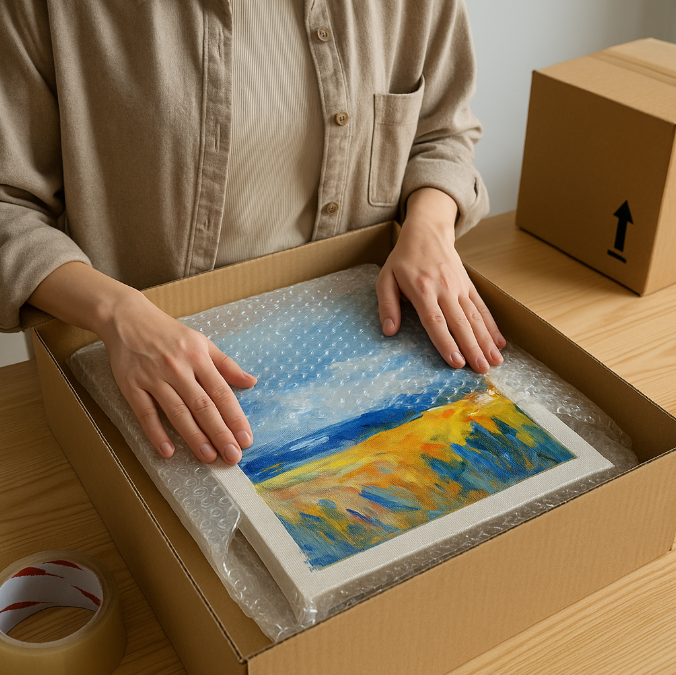By Abbie for Our Arts Magazine
Selling your artwork or handmade creations online can be an exciting and rewarding step in your creative journey. However, accepting payments requires caution, as it’s one of the most common areas where artists and small business owners can fall victim to fraud or unnecessary risk.
Here’s a clear guide to accepting payments securely and professionally, so you can focus on what you do best: creating.
Download this article
💼 1. Use Trusted Platforms
Where possible, use reputable e-commerce platforms that handle transactions on your behalf, such as:
Etsy
Shopify
PayPal
Square
Stripe
Fine Art America / Redbubble / Society6 (for print-on-demand)
These services offer payment protection for both buyers and sellers, as well as tools to track, dispute, and verify transactions.
🧾 2. Always Issue an Invoice
Even if you’re selling via social media or email, send a formal invoice. This:
Acts as proof of the transaction,
Establishes terms (price, delivery time, refund policy),
And discourages scammers who prefer informal deals.
You can use free tools like PayPal Invoicing, Square Invoices, or Wave Accounting to send professional invoices in minutes.
💳 3. Accepted Payment Methods (and What to Avoid)
✅ Safe methods:
PayPal Business (use “Goods and Services” not “Friends and Family”)
Stripe / Square (ideal for websites)
Bank transfer (only with verified buyers and after contract/invoice)
Credit card (via secure checkout only)
🚫 Avoid:
Cryptocurrency — unless you are experienced and the buyer is known/trusted.
Money orders, cheques, or overpayments — classic scam methods.
CashApp / Venmo (in the UK) — these often have no seller protection and are best avoided for business.
📦 4. Don’t Ship Without Payment
This is non-negotiable: do not post or deliver any artwork or product until the full payment has cleared into your account. Avoid phrases like “I’ll pay the rest later” or “Can you hold it for me?” unless the buyer is known to you personally.
🧠 5. Trust Your Instincts
If something feels off — the buyer is pushy, overly flattering, or dodges your standard process — step back. You’re running a business, and you’re allowed to be cautious.
Red flags include:
Overpayment offers
Requests to use unfamiliar couriers
Asking you to pay a “release” or “handling” fee
🌍 6. For International Sales
If you’re shipping abroad:
Add tracking and insurance to every shipment.
Ensure customs forms are filled correctly.
Use clear terms in your invoice about who pays customs fees.
Consider using platforms that handle international taxes and delivery automatically.
📋 7. Keep Records
Always keep:
Screenshots of the sale
Emails and messages
Invoices and receipts
Shipping proof
This helps resolve disputes and is also handy for accounting and taxes.
🔒 8. Bonus Tip: Set Up a Separate Bank Account
Running your art or craft sales through a dedicated business bank account or PayPal account keeps your finances clean and offers extra protection. It also looks more professional to buyers.
—–
Art deserves to be celebrated — and paid for — safely. By using trusted payment processors, avoiding shortcuts, and staying informed, you can build a solid, scam-resistant foundation for your online creative business.
If in doubt, pause and ask: Would a proper gallery or professional shop operate like this?
The answer usually tells you all you need to know.
